Seeing Alarm 179: Low Pressure Transmission Oil on your CNC machine? This common issue can shut down production and lead to unnecessary downtime if not addressed properly. In this blog, we’ll walk you through the most likely causes, how to troubleshoot the issue, and what parts to check or replace—saving you both time and money.
What Triggers Alarm 179?
Alarm 179 typically appears during machine power-up, during a tool change, while the spindle is running and performing a gear change, or any time the spindle is activated and the transmission pump should engage.
When the spindle starts, the motor is responsible for pumping oil through the transmission system. A pressure switch monitors this process to ensure proper oil flow. If sufficient pressure is not detected within 30 seconds, the machine will trigger Alarm 179.
This alarm indicates a potential issue with oil flow in the transmission—often due to a faulty pump, blocked filter, or pressure switch failure—and should be addressed promptly to avoid damage to the spindle or drivetrain components.
What Triggers Alarm 179?
Understanding what’s behind Alarm 179 can help you fix the issue faster and avoid repeated downtime. Below are the most common culprits—each one tied to a specific part of your transmission oil system:
-
-
Low Oil Level
If your transmission oil is running low, the pump won’t have enough fluid to create the necessary pressure. Without pressure, the switch can’t signal the control system that everything is running correctly.
-
Faulty Pressure Switch
The pressure switch is a small component, but it plays a crucial role in detecting whether oil is circulating properly. If the switch is stuck, slow to respond, or simply faulty, it can misreport oil pressure—even if everything else is functioning. If the alarm is intermittent while running, chances are your pressure switch is failing.
-
Failing Pump Motor
A tired motor can still run, but not well enough to generate adequate oil pressure. Over time, motors can collect debris, overheat, or wear internally—causing performance issues that lead to pressure problems. If the alarm happens after extended use, the motor could be overheating or clogged with debris.
-
Damaged Coupling
The coupling connects the motor to the oil pump. If it’s cracked, rotted, or broken, the motor may be spinning without turning the pump. This results in zero oil pressure and a consistent Alarm 179 every time the machine tries to engage the spindle. If the alarm triggers every time you power up, the coupling between the motor and pump may be broken.
-
How to Troubleshoot Alarm 179
While Alarm 179 can be frustrating, it is often straightforward to diagnose by following a structured troubleshooting approach. The root cause typically involves one of a few key components: oil level, pressure switch, motor, or coupling. By inspecting each of these areas systematically, you can quickly identify the source of the issue and take appropriate corrective action.
Step 1: Go to the Diagnostics Screen
- Look for the “Low Oil” input status. Its location may vary depending on your machine model.
Step 2: Bypass the Switch
- Use a jumper wire to simulate a working switch.
- If the input changes when the machine runs, your pump and coupling are working.
Step 3: Check Components Visually
- Open the access panel and locate:
- The oil pump motor
- The coupling
- The pressure switch
- Test the switch with an ohm meter:
- At rest: should be wide open
- When pump runs: should read 0 ohms
Step 4: Inspect the Coupling
- Remove the motor and examine the coupling.
- If it’s worn or in pieces, replace it.
Replacing Faulty Components
If you’ve identified a faulty part—whether it’s the pressure switch, the pump, or the coupling—replacing it is typically straightforward. To replace the pressure switch, simply unthread the old unit, install the new one in its place, and connect it to the normally open contacts.
For issues with the pump or coupling, you’ll need to remove the motor by loosening a few bolts, then drop the pump to access the coupling. Inspect the coupling for wear or damage and replace it if necessary. The pump itself can also be swapped out easily if it’s running hot or not generating sufficient pressure.
Alarm 179 might sound serious, but with a few quick checks and affordable replacement parts from CNC Replacement Parts you’ll be back in business in no time. From pressure switches to couplings and oil pumps, we’ve got everything you need—without the OEM markup.

